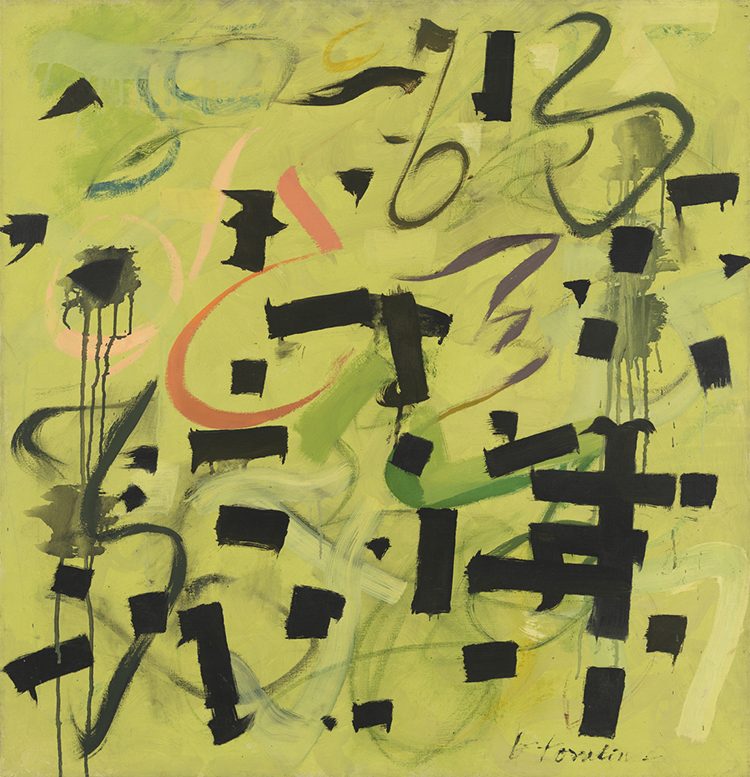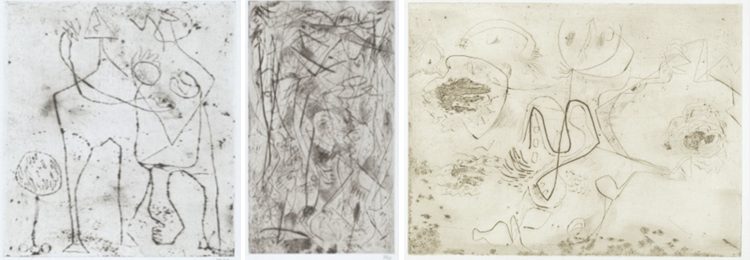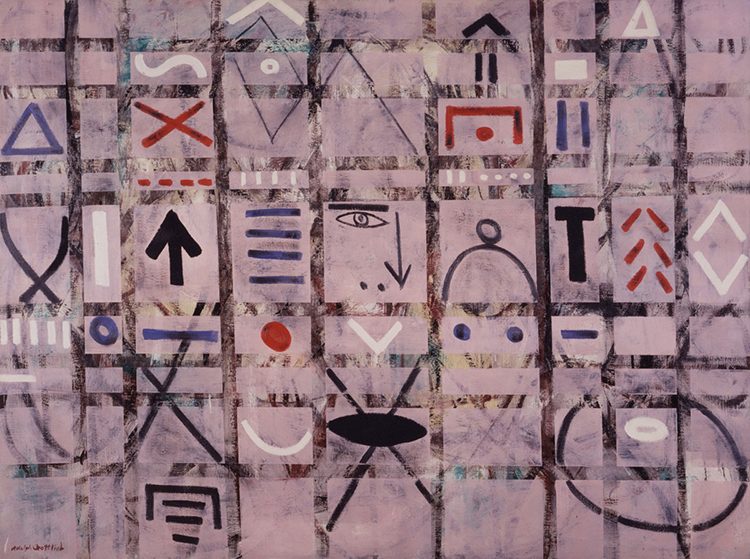Taking inspiration from the major theme of music in Ten Americans: After Paul Klee, we paired 11 staff members with 11 works from the exhibition and asked them to respond to create a playlist in response to their individual artwork. Kelley Daley, Head of Public Programming, created her playlist in response to Bradley Walker Tomlin’s “Number 12–1949.”

Bradley Walker Tomlin, Number 12–1949, 1949, Oil on canvas, 32 1/4 x 31 1/4 in., Whitney Museum of American Art, New York, Gift of Abby and B. H. Friedman in honor of John I. H. Baur
When I first looked at Bradley Walker Tomlin’s Number 12, I was struck by the cheerful, spring-like, Nickelodeon-esque slime green in the background. It made me nostalgic, warm, and happy; however, after spending time with the painting, the dark shapes became more prominent and I felt sentimental and introspective. I noticed the drips on some of the shapes; the almost non-existent, left behind shapes and lines in the background; or the bright pop of color mixed in with the dark, bold shapes that didn’t make the painting seem so overwhelmingly sad. I was most inspired by the contradiction of bold black lines with the bright, hidden shapes in the background that created an oscillation between happiness, nostalgia, and sentimentality. From David Bowie to Childish Gambino, this playlist features tracks that have a pronounced, toe-tapping beat (inspired by the bold black shapes), that sometimes overshadows the sentimental tenderness in the lyrics or other instruments.
Kelley Daley, Head of Public Programming
Feeling inspired? Create your own playlist based around works in the exhibition and send it to us at communications@phillipscollection.org and we may feature it on our blog and social media.


